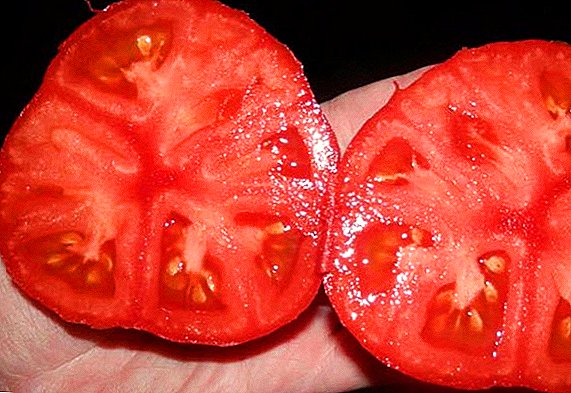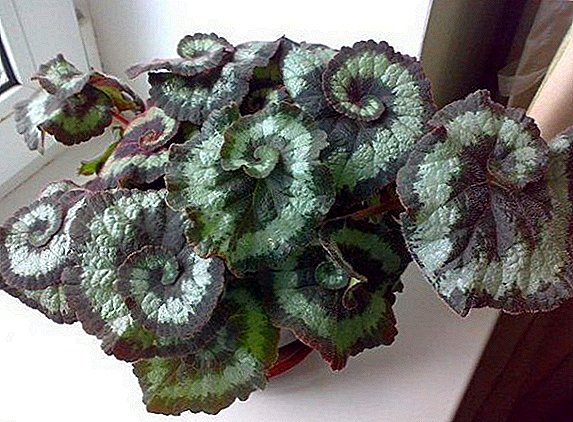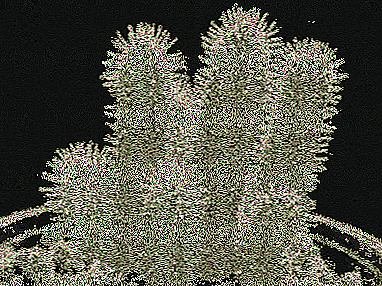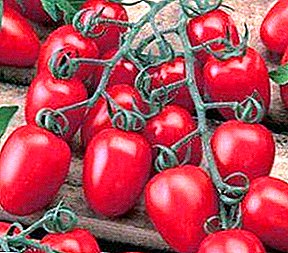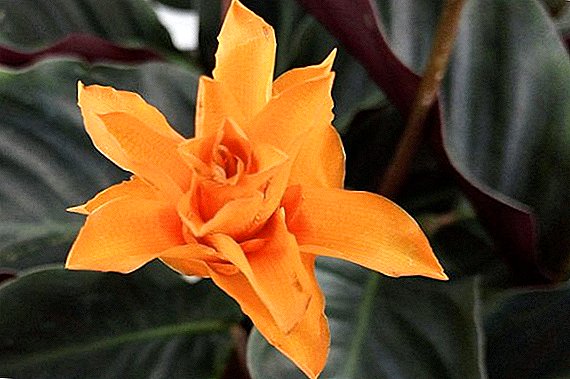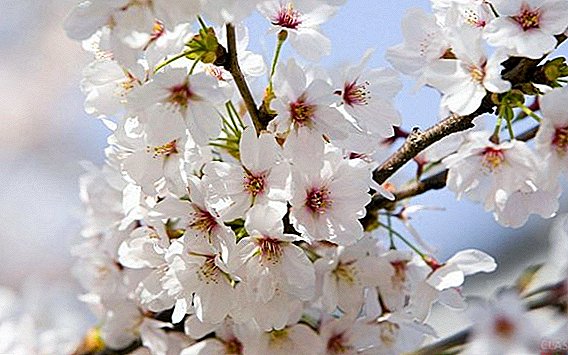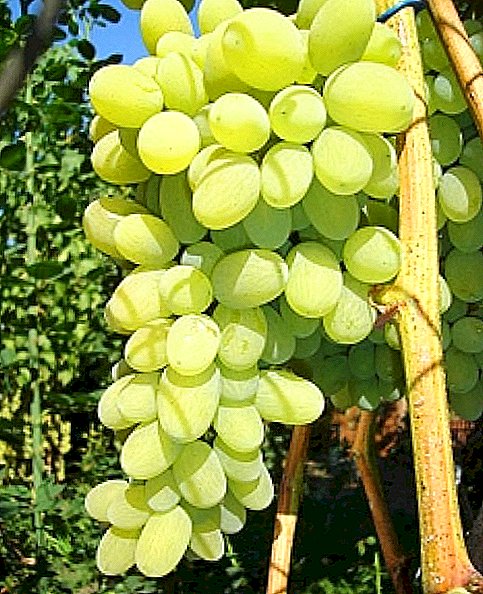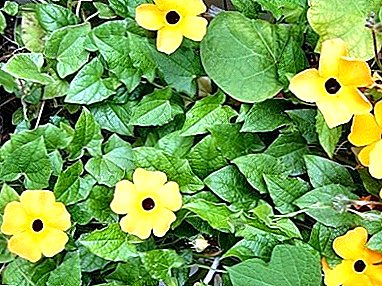
"Tunbergiya" - a beautiful perennial plant.
When growing requires strong supports.
It responds well to top dressing, frequent watering and good lighting.
Prefers mineral fortified soil.
History of
Tunbergia received its name in honor of the Swedish naturalist-researcher of the XVIII-XIX centuries. Karl Peter Thunberg, called "the father of South African botany". It was brought to Europe at the beginning of the 18th century. Subsequently, this species was renamed by botanists several times, but nowadays it became well-known under the fixed initial name, which another scientist, Carl Linley, gave to this plant in honor of Thunberg.
General description of the plant
"Tunbergiya" - flowering ornamental plant. Homeland is South Africa. Perennial can be found on the island of Madagascar, Korea, Japan, Australia.
There are more than 200 different subspecies. Latin name: Thunbergia. It belongs to the Acanthaceae family. Named flower in honor of the naturalist and researcher Carl Peter Thunberg. Also because of the lilac peephole in the middle of the flower, the plant is called "Black-eyed Susann."
It is not advisable to plant the plant in the open ground.as cold winters freeze the root system. Therefore, the flower "Tunbergiya" is used as a letnik. This representative of the flora can be grown in gardens, greenhouses, glazed loggias, balconies and in indoor rooms.
 In this case, the plant will be perennial. Used for vertical gardening. The plant needs high support. In height "Tunbergiya" reaches more than 2.5 meters.
In this case, the plant will be perennial. Used for vertical gardening. The plant needs high support. In height "Tunbergiya" reaches more than 2.5 meters.
The plant can be in the form of a bush or an elongated vine. The lobed leaves are oval or in the form of hearts. In length reach 3-11 cm, depending on the subspecies.
The edges of the leaflets are jagged. Flowers in the form of funnels. 3-5 cm in diameter. Flowers are located on elongated stalks.
Can be single or collected in dense inflorescences. The colors of the flowers are different: white, lilac, turquoise, amber, brown, purple, maroon.
Some subspecies are endowed with a strong tart flavor. Flowering occurs from mid-July to early October.
Varieties with photos
Grandiflora
Blue (many-flowered) hails from northeastern India. In the natural environment is found in China, Nepal, Bhutan. This is an evergreen plant with tall, climbing shoots. The leaves of this species are distinguished by a rich bright green color, they can be smooth or pubescent, the edges are jagged. The flowers of this plant are large (up to 10 cm), usually grow in dense brushes, but are also solitary. The color range is very wide, from white and blue to blue, purple and purple.
Many-flowered tunbergia are grown as an ornamental plant in warm rooms with high humidity. In order to ensure its flowering, in winter it is necessary to monitor the temperature - it should not be below 12 ° C, and in summer you should avoid direct sunlight.

Fragrans
Fragrant - a plant that looks like a ribbed vine with a length of 6 m. Triangular leaves on top have a rich green color, and bottom - pale, with a strip in the middle. The flowers are single, white, up to 5 cm in length. They tend to close at night and bloom again at sunrise. The main distinguishing feature of this species is the intense, sweetish smell of flowers.

Mysorensis
Mizorenskaya (Mysore) is also from India and is perhaps the most unusual member of the family. In its natural, wild environment, the stalk-liana of the Mysore tunbergia can reach a height of up to 10 meters. Leaves - numerous, long, green.
The main feature of this species is the unusual shape of flowers. On hanging brushes up to one meter in length, brown and orange shades grow flowers, the shape of which resembles a snake's mouth. The similarity becomes even greater due to stamens imitating the teeth of the upper jaw.

Alata
Winged also called: "Black-eyed Susan." She received her name thanks to the shape of flowers. White, yellow and orange hues, the structure resembles a butterfly wing, and in the center of the petals there is a round black core that looks like an eye.
In nature, the vine of this plant can grow to 6 meters. In our climate, winged tunbergia grows more slowly and reaches up to 2.5 m. Usually it is grown from seeds, as an annual plant.

Erecta upright
West Africa is considered the birthplace of this plant and in the European climate this species is rarely found. It is a branchy shrub whose shoots reach a height of one and a half meters. The peculiarity of this tunnel is that with time the stems may fall off, therefore, when grown, they must be tied to pegs.
Leaves - serrated, lanceolate forms. The flowers are single and have a purple color with a small yellow spot at the base.

Home care
Actions after purchase
 Do not buy a plant in the winter.
Do not buy a plant in the winter.
Since at this time the plant comes a period of rest, and it can abundantly shed leaves.
In winter, the flower requires a special temperature and gentle care.
Many buyers, faced with numerous problems, throw the plant into the street.
Therefore, it is recommended to buy perennial in spring or summer.
Pruning
When forming it is necessary to remove weak stems and withered flowers. During the growth of this representative flora should be sent in the right direction. To do this, use the support and wire. Do not use rusty material. Oxidation can adversely affect plant health.
Watering
The plant prefers moderate watering. But since the beginning of flowering in mid-July, it dramatically increased. During this period, the flower requires additional moisture.
Otherwise, this representative of the flora will begin to fold the leaves and unopened buds. Flowers may begin to crumble. In hot weather, a pet loves frequent spraying from a sprayer. The procedure is best carried out in the evening.
Transfer
 Transplantation is carried out only when growing at home.
Transplantation is carried out only when growing at home.
It is necessary to choose containers that are larger in diameter.
Soil used purchased for home flowers or decorative cacti.
It is important that the earth is well missed the air and water. Drainage from natural stones or expanded clay is poured at the bottom. Pour the black soil and install the plant. Abundantly watered.
Important! You can feed nitrogen-containing fertilizers. Application period: 1 time in 14 days.
But during the flowering period it is forbidden to feed the plant. This will adversely affect the active growth and abundant flowering.
Temperature
The plant is very thermophilic. Grows well at a temperature of 23 ° C.
In winter, the temperature should not fall below 15 ° C. The flower likes moist air. In hot weather, next to it, you can put a container with water or moistened moss. The plant prefers well ventilated rooms.
Lighting
The plant loves bright natural light. Can not stay long in the sun. In winter, prefers additional artificial lighting.
Landing
Planting in open ground or in greenhouses is carried out in the spring. It is important to wait out the freeze. Otherwise, the plant will freeze.
For this representative of the flora, it is necessary to find a place protected from drafts and direct sun. It is not recommended to plant the plant on the north side, since “Tunbergia” does not like constant shade. Actively grows in neutral soil. He likes nutritious fortified soil.
Limestone and drained earth are excavated in advance at the chosen landing site. It is necessary to set this representative of flora at a distance of 35-40 cm from each other.
Before landing it is necessary to establish strong support. You can use gratings or twisted wires. With them, a creeping vine will grow up or to the side. After landing the place is plentifully watered. Flowering occurs 30-100 days after planting.
Growing from seed
Growing from seeds begin to produce in late February - early March. Planting seeds must be treated with "fumar" or "epin." They are sown in pots with wet soil. The substrate should consist of turf soil, peat and fine-grained sea sand.
Leaflands, humus and coarse river sand can also be used. Seeds are planted in the center of the tank. Sprinkled with black soil and moistened with a spray. Create a mini-greenhouse for the greenhouse effect.
Planting material is covered with cans, plastic bags or plastic bottles. The main thing is to let the tank let in sunlight. Capacity is placed on the windowsill.
 It is important that the place is well lit, warm, without drafts.
It is important that the place is well lit, warm, without drafts.
The ground in the tank should always be in a humid state.
The optimum temperature for growth is 21-23 ° C.
In good conditions, the first shoots should appear after 7 days. After the appearance of the leaves of the mini-greenhouse clean. The plant must be gradually accustomed to room temperature.
Pests
May be affected by spider mites, aphids, whiteflies and flaps. All insects are destroyed by chemical spraying. You can use the drugs "actellic" and "fitoverm". The interval between spraying: 7-14 days. Number of processing sessions: 1-4. More than four times the plant can not be sprayed. Chemicals can adversely affect the health of the plant and a number of people who stay.
Important! After spraying the flower must be kept away from children and pets. If Tunbergia enters the body, it is necessary to immediately consult a doctor.
Diseases
 Sometimes the plant is affected by fungal diseases.
Sometimes the plant is affected by fungal diseases.
This disease is treated with fungicides.
The affected areas of leaflets and flowers must be removed. Also this representative of flora can get sick from the wrong care.
When green molds appear on branches, flowers or leaves, it is necessary to stop spraying and watering. The plant is transplanted into new containers and replace the soil in them.
When exposed shoots and poorly growing leaves, the flower is rearranged or transplanted to a more lighted place. The rare growth of leaves indicates too shaded growth.
Where and how is used
Due to the winding properties of the stems, this plant is widely used in garden design. Tunbergia grows well and quickly gaining green mass, wrapping around fences or trellis shoots saturated color. A "highlight" of such a hedge are flowers of various bright colors, contrasting favorably with each other and giving the scenery an element of perfection.
Besides the decorative features in landscape design, this The plant is also used in traditional and traditional medicine, as well as cosmetology:
- as antipyretic and wound healing agent,
- to normalize water-lipid balance,
- to remove toxins from the body,
- as a raw material for bioactive additives,
- to slow down the aging process, smoothing wrinkles, etc.
"Tunbergiya" - evergreen flowering liana. The plant loves sunlight, additional fertilizing, frequent watering and spraying. Can grow in indoor conditions, greenhouses and botanical gardens. When planting in open ground is an annual.



